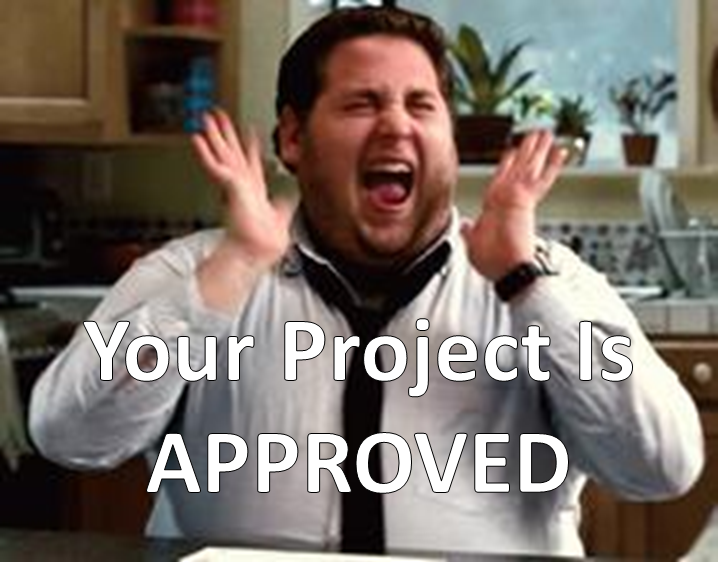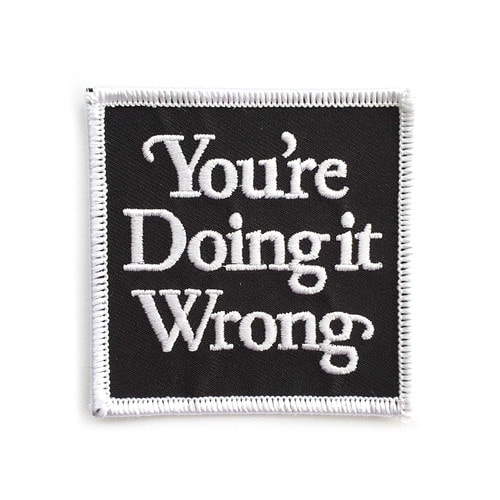|
Ensuring the smooth progression of a medical device through product development is more than just having a good idea and the money to back it up. In the ever-evolving landscape of healthcare, the development of cutting-edge medical devices demands a strategic and disciplined approach. At the heart of this process lies several key drivers each with their own distinctive value, yet all of which work in harmony bringing us to the conclusion we are hoping for - getting our products successfully through each phase of product development and eventually out the door to patients in need. This article explores the 'key drivers' which will keep your product development efforts successfully moving forward. Let’s begin with looking at what may very well be an obvious statement – what problem are you trying to solve and is it worth solving in the first place. The second portion of this question is key – is the problem you want to solve, via the technology you intend to develop, actually worth solving. Some advice – not all problems are worth solving, especially in the eyes of investors. It’s going to take deep pockets to build a product, upwards of $100 million on average for a PMA device, which is why its so important to be able to confidently answer this first two-part question: what problem are you trying to solve and is it worth solving in the first place. Once you know your technology front and back, understand the macroeconomics associated with it, it’s time to put a well-crafted plan into place to help keep you on track throughout each phase of the development cycle. Here enters project management. Project management plays a critical role in the success of medical device product development as it holds your team accountable to keeping focused on the key strategies which contribute to a seamless progression from concept to market. This should include: Developing A Clear Project Plan A well-defined roadmap is the cornerstone of any successful project as it delineates tasks, milestones, and dependencies. Roles and responsibilities are outlined, laying the groundwork for a collaborative and efficient work environment. Regular updates and adjustments ensure the plan can accommodate change while staying aligned with the overarching project goals. Timely Decision-Making Delays are costly endeavors. Projects which embrace prompt decision-making empower team members to make informed choices within their spheres of expertise. This can minimize bottlenecks, fostering an environment where decisions were made swiftly, keeping the project on a forward trajectory. Risk Management A robust risk management plan provides continuous assessment of potential challenges. Glen Rabito, COO of Nidus Biomedical, advises “identify the top three (3) risks and go tackle those things first. This will allow us to understand the technical and clinical risks” [associated with the development of your technology]. Effective Communication Clear and transparent communication is the lifeblood of successful projects. Regular team meetings facilitate discussions on progress, challenges, and potential solutions, creating an environment where everyone is well-informed and engaged. Resource Allocation Efficient resource allocation is essential for maintaining momentum throughout the development process. Teams which carefully monitor the allocation of human, financial, and technological resources tend to fare better than those who don’t. Also, what should you keep internally as a core competency versus outsource to someone better set up to facilitate a portion of your work. Adaptability Flexibility in the face of change is a hallmark of successful product development efforts. Project plans should be designed to be adaptable allowing the team to accommodate shifts in scope, requirements, or unforeseen economic challenges. Regulatory Compliance Navigating the complex landscape of medical device development requires a keen understanding of regulatory requirements. Staying informed of regulations and incorporating specific milestones related to regulatory submissions in the project plan is crucial to your success in keeping things moving forward. Prototyping and Iterative Development Teams which embrace an iterative development approach are focused on continuous improvement, allowing the team to make necessary adjustments based on user and stakeholder input. The result is a product which meets regulatory standards AND user needs and expectations. Quality Assurance and Testing Ensuring the highest quality standards is non-negotiable. Thorough quality assurance and testing processes should be integrated at every stage, whereas multiple testing iterations are planned for and issues identified during testing are promptly addressed. Documentation and Traceability Many of us love to gloss over this step – yet doing so is a monstrous mistake. A disciplined approach to documentation is critical for accountability and traceability. A team which maintains accurate and up-to-date documentation throughout the project, establishing clear traceability between milestones, design inputs, and verification/validation activities will be better positioned for success down the road, while mitigating project efforts being put on hold. In the intricate dance of medical device development and effective project management is the guiding force which better positions your team and company for success. The strategies outlined above, from meticulous planning to continuous improvement, collectively contribute to the seamless progression of a product and the overarching project. As the healthcare landscape continues to evolve, these principles will remain essential for navigating the complexities of medical device development and delivering innovations which make a lasting impact on patient care. The quickest way to overcome a business challenge is to get help from those who are experienced in besting your beast! The team at Square-1 Engineering is comprised of a variety of technical and project management professionals who are subject matter experts in the areas of NPD, Quality, Compliance and Manufacturing Engineering. Learn more about how we can solve your work and project problems today to get you back on track!
0 Comments
The world around us is ever-changing and constantly evolving, and for those of us who are leading teams, projects or companies this presents a daily challenge. One area in the business world where we commonly run into change, or scope creep as many of us like to call, is in project work. It doesn’t matter if you are running an internal project, or if you are a consultant operating externally, change in work and projects alike seems constant. If you are new to the term, scope creep is defined as “changes, continuous or uncontrolled growth, in a project’s requirements, at any point after the project begins.” Simply put, it’s a change in plans that was unplanned for after the starting point of a body of work. While complete prevention of scope creep might be unreasonable, employing strategies at the forefront of your project and throughout are vital to ensure you stay on track with as little change along the way. Strategies like the ones listed below also allow the project to ebb and flow so that some change can be accommodated while other changes, which could derail a project, are held off at the proverbial gates. Below you are some strategies to help you prevent scope creep on your next project: 1. Clearly Define the Scope Up Front Have a detailed project scope statement that outlines the project's objectives, deliverables, boundaries, and limitations. Make sure all stakeholders agree on the scope before starting the project. Special note – want to get approval quickly for your project? Make sure the project and intended outcomes align with the company’s mission and primary objectives while clearly showing a good return on investment (ROI). 2. Engage Stakeholders From the Beginning Involve key stakeholders in the scope definition and planning processes. Their input and feedback can help identify potential scope creep early on and ensure that their expectations align with the project's scope. 3. Set Realistic Goals Establish achievable project goals and objectives. Unrealistic expectations can lead to scope creep as stakeholders try to add additional features or requirements. If you can’t get agreement on the goals of the project this should cause you to pause before moving forward. Remember, each person involved may have a different perspective of what is needed based on their own biases. 4. Create a Change Control Process Develop a formalized process for requesting and approving changes to the project scope. I like to use the engineering change order (ECO) process on our projects as it formalizes changes and requires approval from stakeholders before the changes are enacted. All changes should go through this process, involving the evaluation of their impact on time, cost, and resources before being accepted. Speaking of scope creep, in this episode of Medtech Snapshot Terry Vick, Sr. Director Program Management at Shockwave Medical out of Santa Clara, CA talks about some of the strategies in this list which we need to be aware of and consider upfront in the project planning phase into order to limit scope creep on the back end. Plus, the importance of having an internal project sponsor. Back to our list of strategies to help you prevent scope creep… 5. Prioritize Requirements Use techniques like MoSCoW (Must have, Should have, Could have, Won't have), Five Whys or the Analytic Hierarchy Process (AHP) to prioritize project requirements. This helps in focusing on what's essential and avoids unnecessary additions. 6. Track Progress Against Scope Regularly track project progress against the defined scope. Tools like Microsoft Project which build out real-time Gannt charts are incredibly helpful to visualize tasks and progress. This also helps identify any deviations early on and allows for timely corrective actions. 7. Communicate to Your Team Consistently & Clearly Ensuring all team members and stakeholders understand the project's scope and the implications of scope changes is paramount to the success of the project. Effective communication can help prevent misunderstandings that might lead to scope creep. 8. Document Changes to the Project Keep a detailed record of all changes to the project scope, including their rationale and impact. This documentation helps maintain transparency and accountability. 9. Manage Expectations by Providing Project Updates to Stakeholders Continuously manage stakeholder expectations by providing regular updates on project status and any changes to the scope. This can help prevent unrealistic demands and last-minute additions. 10. Institute a Review and Approval Process for Scope Change Institute a formal review and approval process for scope changes. All changes should be evaluated by relevant stakeholders and approved based on their impact. 11. Stay Firm but Flexible While it's important to resist unnecessary scope changes, be open to valid suggestions or changes that genuinely enhance the project's value. Just ensure that these changes go through the proper evaluation and approval processes. If you can’t readily identify the ROI of the change it probably isn’t a good change to consider. 12. Conduct Regular Project Reviews Conduct regular reviews with stakeholders to ensure that the project is meeting their expectations and to address any concerns before they escalate. When facilitating meetings, try to employ Jeff Bezos’ ‘Two Pizza’ rule when it comes to meeting attendees. 13. Manage Dependencies to Avoid Unintended Cross Functional Impact Understand and manage dependencies between project tasks and deliverables. Changes in one area can often impact other parts of the project. Remember that while complete prevention of scope creep might be challenging, these strategies can significantly help to reduce its occurrence and impact on your project. Regular vigilance and proactive management are key to avoiding scope creep from taking over your project. The quickest way to overcome a business challenge is to get help from those who are experienced in besting your beast! The team at Square-1 Engineering is comprised of a variety of technical and project management professionals who are subject matter experts in the areas of NPD, Quality, Compliance and Manufacturing Engineering. Learn more about how we can solve your work and project problems today to get you back on track! Get Your Boss to Approve Your Idea12/8/2020 You’ve got an idea! Maybe it’s to optimize a process, save the company money or to develop a new product. Many of us at one point or another in our careers will come across this situation where we have a brilliant idea but we don’t know how to implement it. Once we have the idea what we do after the fact is what makes or breaks our ability to turn into reality.
The steps below can help you organize your thoughts in a formal manner so you can further vet your idea while positioning yourself (and of course your idea) for the best possible chance to get approval from the powers that be. Step #1 – Develop A Business Case A business case captures the reasoning for initiating a project or task. It is often presented in a formatted written document outlining everything from the reason for the project, problem(s) it solves and the ROI. Components of a business case document may include:
Once you’ve compiled your business case now it’s time to present it. Set a meeting with your boss, or the appropriate party who would most likely approve your idea and or project. Inform them ahead of time what the purpose of the meeting is and arrive prepared with multiple copies of your business case both to reference and present from. Leave the approver with a copy of your business case and an action item to keep them engaged and thinking about your presentation. Well look at that! You did such a good job compiling your thoughts and presenting your idea that your boss granted you approval to move forward in the project. Excelsior! Now that you have approval, which is a fancy way of saying “we like your idea enough to put money behind it”, you will need to build out the project in detail using a ‘Project Charter’ to ensure it meets a successful conclusion. Note: What’s the difference between a ‘Business Case’ and a ‘Project Charter’? A business case comes first as it is an assessment or feasibility study of an idea or task; the sponsor (person who has the idea) pitches their case to the funding stakeholders (typically your boss or people in management). If approved, a project charter is completed outlining the project in detail. The information within the charter is the constraints for which success will be measured. Step #2 – Develop a Project Charter As mentioned above, the project charter is a document which clearly defines the project scope, objectives, and participants involved. Components of a project charter may include:
You’ll note that much of the work that was done initially for the business case can in turn be used in completing the project charter. If your project is big enough it may be worth looking into project management software, like Basecamp or JIRA, to electronically track your projects activities and deliverables. Now that you’ve got your main documents guiding you through the project out of the way the next step will be to kick off the project and get underway. I recommend doing the kickoff meeting in person if possible, or via video conference call, where the team can openly talk about the needs of the project and how tasks will be divided up. All resources involved in the project should have a copy of the project charter along with clear expectations on what their role is and timeframe to deliver those tasks. Now that you have a basic foundation for what is needed to get your projects approved and kicked off the next step is to look into resources like the Project Management Institute (PMI) and their primary resource guide called Project Management Body of Knowledge (PMBOK). These resources will help you stay on track while providing vast amounts of information on how to move projects through to successful completion. Monday Quickie - You're Doing It Wrong7/22/2019 “They gave us world class, but all we needed was the basics.”
Last week I was speaking with a VP of Quality at a small medical device company at which point he politely complained to me about a recent experience he had with a consultant their company brought onboard. The company was implementing a new online quality management system (QMS) and was utilizing this consultant to get it up and running. The VP shared with me his irritation about how the consultant came in and took on the project as an expert in the field. The consultant had done many QMS implementations prior and came with good recommendations of his work. As the conversation went on the VP share further irritation about his experience working with the consultant. He brought in an expert to do a job that was rather straight forward yet that’s not what the company got in the end. Unfortunately, the consultant failed to understand one of the most important aspects of his job – understand the needs of the customer and implement accordingly. “We’re a small company, we don’t need all the bells and whistles right now [from a QMS system]. We just need a system that keeps us in compliance while making things easier from a process flow standpoint.” The VP was sharing with me a painful experience he was having as a result of someone doing work for him and not understanding what was actually needed in the moment to be successful on that project. Sometimes what’s needed is the basics, not world class. The key is knowing when each of these is appropriate. All to often we show up to a project or work with the idea we’re going to dress up the proverbial pig ready for a fancy night out on the town. This pig of ours is going to look amazing, amazing because of the work we did to get it there. However, we end up missing the mark because we don’t bother to ask the right questions along the way. If we had bothered to ask the right questions to understand what was truly needed by the company and the key stakeholders we may find out the ‘pig’ just needs a new pair of shoes, not a whole wardrobe change. Here’s how this played out in the scenario above with my client and VP…
Here’s the rub on the situation. If the consultant had bothered to ask the vital question of their client upfront “What does ‘success’ looks like at the end of the project?” he would have found out the client needed a practical QMS which met the basic needs of their product and regulatory requirements yet did not need a lot of the fancy bells and whistles larger companies utilize with their QMS. Basically, this small medical device company needed a QMS that was straightforward, basic yet allowed them to upgrade their company to meet the regulatory requirements for their product. The client wanted a no frills, basic system yet what they got was a world class system they’ll probably never fully utilize. Key Takeaway: Don’t assume your work or project requires you to put forth world class service. Sometimes ‘good enough’ is all that’s needed. Knowing the different between ‘good enough’ and world class work outputs is a vital skill to develop and implement in your career. Action Item: Before you begin your next project at work think to yourself “what’s really needed here? The basics or something more?”. Then actually go ask the key stakeholder in charge. Doing this shows an ability to think big picture with an appreciation for what’s best for the company, not what’s best to make you look good as a result of the work you can do. Remediation in the medical device industry often adopts a similar saying you’ll hear motorcyclists say when referencing laying their bikes down [accidents], “it’s not if it will happen, it’s when”.
With so many companies over the years going through major remediation efforts one would think by now most people in the business would have a good appreciation for what a successful process looks like to navigate through FDA remediation projects. Yet, many people will tell you the remediation projects they’ve been a part of were messy, unorganized and a galactic waste of money. Unfortunately, when we’re faced with remediation there is no choice other than to mend our broken wings before flying home for the summer. One of the biggest issues with remediation projects is many people in the company look at it as a ‘quality’ issue. Meaning, “it’s the quality departments problem, let them deal with it because we have our own projects and deadlines.” Shocking as this may be, I literally was told this several years ago from an R&D Director whose company was going through a sizable remediation overhaul. Needless to say he wasn’t operating as a team player and certainly wasn’t aligned with what was best for the company. Which sparks an interesting question – if I have a remediation project ready to get underway, what are the things I can do in order to ensure it succeeds? Regardless of the project size, these are the four things you must consider as a top priority in your next remediation effort: 1.Establish clear, consistent and easy internal communication protocol for the project This is one of the most overlooked parts of a large scale project. It’s especially important when considering cross functional company divisions and the people accountable to working towards successful completion. When people are misinformed or don’t know what’s going on you can be certain it will slow your project down and cause further product quality and procedural issues down the road. 2.Get a GREAT ‘lobbyist’ You’ll need someone acting as the liaison between your company and the FDA. Typically, this person comes from your QA/ RA group, but is that the right person? Don’t assume your de facto executive in QA / RA is the best for the job. Ensure your company aligns itself with a proven individual who has relationships within the FDA and knows how to play the game. This will pay off huge dividends in the end as they’ll know how to navigate delicate situations, get continuances and or leniencies where able. 3.Ensure your entire company (especially executive management) is onboard Everyone in the organization, bottom up, needs to understand why this project just went to the top of the work list. Everyone needs to be bought in and rowing in the same direction, otherwise you’ll experience cumbersome internal issues as mentioned above, which waste time, money and energy. 4.Learn how to manage cost early on Often companies will use a consulting group to lead or help work through their remediation efforts. All to often the selection process for that supplier comes down to a key relationship within the company which basically side tracks any formal vetting process of other possible suppliers. Cost becomes a 2nd or 3rd consideration over a relationship. This can be disastrous as selecting the wrong supplier to help you with a remediation project can end up costing you thousands, if not hundreds of thousands, of dollars extra down the road. Case in point – when you use suppliers that fly in consultants to project work you are literally paying more than double the cost for that service just because those resources weren’t local. Flights, housing, food, per diems, auto travel, etc. adds up incredibly fast. I’ll admit, sometimes the best solution is an out of town supplier, however be sure to do your homework here before you settle on the one supplier that’s going to get your company back on track. Key Take Away: If you’re heading into a FDA remediation project it is paramount to set up a company wide communication protocol which provides detail to everyone Action Item: Remember – it’s not ‘if’ but ‘when’ you’ll find yourself in a situation where you’re stuck going through FDA remediation. Therefore, you must be proactive. Before you need the help, begin compiling data on suppliers that could help with a possible remediation projects. Compare their capabilities, learn how they would approach a potential project, how do they charge, etc. Once you’ve done your homework you’ll then have all the necessary information upfront to make a strategic and informed decision when it comes time to dive into remediation. [Note] this article intentionally does not cover the tactical approaches to FDA remediation as there are hundreds of articles and sources providing that information. This article covers the intangible parts of projects of this nature, the ones that most often go overlooked. About the AuthorTravis Smith is the founder and managing director of Square-1 Engineering, a medical device consulting firm, providing end to end engineering and compliance services. He successfully served the life sciences marketplace in SoCal for over 15 years and has been recognized as a ‘40 Under 40’ honoree by the Greater Irvine Chamber of Commerce as a top leader in Orange County, CA. Categories
All
Archives
July 2024
|
Visit Square-1's
|
|








 RSS Feed
RSS Feed


